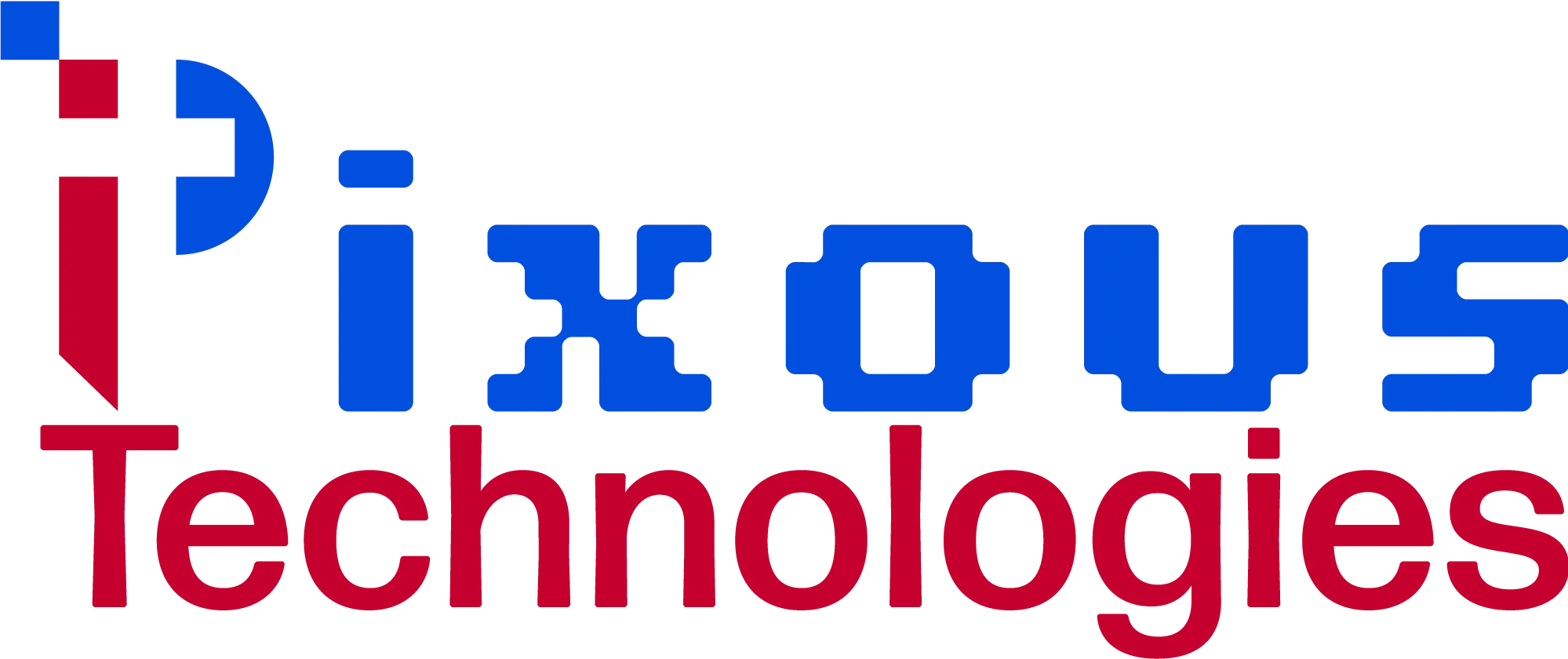In the realm of digital marketing, PPC (Pay-Per-Click) advertising plays a pivotal role, allowing businesses to display their ads on various online platforms and pay only when a user clicks on their ad. This PPC advertising tutorial will define the significance of PPC in online advertising, explain how PPC works, and highlight the myriad benefits it offers for businesses.
PPC is known for its ability to drive targeted traffic, generate quick results, and provide valuable insights into consumer behavior and preferences. With its cost-effective nature and measurable outcomes, PPC has become a preferred choice for businesses aiming to enhance their online visibility and achieve specific marketing objectives.
Moreover, PPC campaigns can be tailored to reach a specific audience based on various demographics, interests, and online behaviors, allowing businesses to maximize their reach and engage with potential customers effectively. By mastering the art of PPC advertising, businesses can create impactful campaigns that resonate with their target audience and drive meaningful results, ultimately contributing to their overall growth and success in the digital landscape.
Setting Up PPC Campaigns
Embarking on a PPC campaign involves several critical steps that lay the groundwork for a successful advertising strategy. Whether you opt for Google Ads, Bing Ads, or Facebook Ads, the initial setup process remains vital.
Google Ads setup steps:
- Create a Google Ads Account or Sign In:
- Visit the Google Ads website and sign in with your Google account, or create a new account if you don’t have one.
- Navigate to the Campaigns Tab:
- Once you’re logged in, click on the “Campaigns” tab located in the left-hand menu.
- Click the “+ New Campaign” Button:
- Select the “+ New Campaign” button to initiate the campaign setup process.
- Choose Your Advertising Goal:
- Select the primary advertising goal for your campaign, such as sales, leads, website traffic, or brand awareness.
- Define Your Campaign Settings:
- Specify the campaign name, select the geographic location you want to target, set your preferred language, and determine your budget and bidding strategy.
- Perform Comprehensive Keyword Research:
- Utilize the Google Ads Keyword Planner to identify relevant and high-performing keywords for your campaign.
- Craft Compelling Ad Copy:
- Write engaging and relevant ad copy that aligns with your chosen keywords and appeals to your target audience.
- Utilize Ad Extensions Effectively:
- Add various ad extensions, such as call extensions, site link extensions, and structured snippet extensions, to enhance the performance and visibility of your ads.
- Review and Launch Your Campaign:
- Double-check all your campaign settings, ad copy, and extensions before launching your campaign to ensure everything is accurate and ready to go live.
Bing Ads campaign setup:
- Sign In to Bing Ads or Create an Account:
- Visit the Bing Ads website and sign in using your Microsoft account. If you don’t have an account, you can create one easily.
- Access the Campaigns Tab:
- After signing in, navigate to the “Campaigns” tab to start setting up your new campaign.
- Click on “Create Campaign”:
- Choose the “Create Campaign” option to begin the campaign setup process.
- Choose Your Campaign Goal:
- Select your advertising goal based on the options provided, such as driving traffic, boosting conversions, or generating leads.
- Set Up Your Campaign Settings:
- Enter the campaign name, budget, ad distribution preferences, and select the target location for your campaign.
- Perform Thorough Keyword Research:
- Use the Bing Ads keyword research tool to identify relevant and high-performing keywords that align with your campaign objectives.
- Create Compelling Ad Copy:
- Develop persuasive ad copy that highlights your unique selling propositions and entices users to click through to your website or landing page.
- Make the Most of Ad Extensions:
- Incorporate ad extensions like location extensions and call extensions to provide additional information and improve the visibility of your ads.
- Review and Launch Your Campaign:
- Before launching your campaign, review all campaign settings, ad content, and extensions to ensure everything is accurate and set up correctly.
Facebook Ads tutorial:
- Log In to Facebook Ads Manager:
- Access the Facebook Ads Manager using your Facebook account credentials.
- Click on “Create” to Start a New Campaign:
- Click on the “Create” button within the Ads Manager to begin setting up your new campaign.
- Choose Your Marketing Objective:
- Select the marketing objective that aligns with your campaign goals, such as brand awareness, lead generation, or conversions.
- Define Your Target Audience:
- Specify your target audience based on demographics, interests, and behaviors to ensure your ads reach the most relevant users.
- Set Your Campaign Budget and Schedule:
- Determine your campaign budget and schedule, and select your preferred bidding strategy based on your advertising goals.
- Create Visually Appealing Ad Creatives:
- Design engaging and visually appealing ad creatives, including images, videos, or carousels, that resonate with your target audience and encourage interaction.
- Choose Ad Placements:
- Select the ad placements where you want your ads to appear across the Facebook family of apps and services.
- Review Your Ad Settings and Creative Content:
- Double-check all your ad settings, creative content, and targeting parameters before launching your campaign to ensure everything is set up correctly and ready for deployment.
As you venture into the world of PPC advertising, it’s natural to encounter some initial challenges. However, with the right approach and a solid understanding of the platforms, you can leverage the full potential of this dynamic marketing strategy. Embrace the learning process, as continuous experimentation and optimization are key to achieving outstanding results. Keep yourself informed about the latest trends and features within the industry, and don’t hesitate to explore advanced techniques to set yourself apart from the competition.
Your commitment to mastering PPC will undoubtedly lead to significant business growth. Stay informed with the latest updates and valuable insights by referring to the official help centers and resources offered by Google Ads, Bing Ads, and Facebook Ads. Best of luck on your journey exploring the PPC platforms guide!
Keyword Research
Keyword research serves as the cornerstone of any successful PPC campaign. Identifying the right keywords ensures that your ads reach the most relevant audience. Follow these steps to conduct effective keyword research:
- Understand Your Target Audience: Define your ideal customer persona and gain insights into their needs and preferences.
- Brainstorm Seed Keywords: Compile a list of seed keywords related to your products, services, or industry.
- Utilize Keyword Research Tools: Make use of robust keyword research tools like Google Keyword Planner, SEMrush, or Ahrefs to expand your keyword list and discover new, relevant keywords.
- Focus on Long-Tail Keywords: Incorporate long-tail keywords, as they often yield higher conversion rates and have lower competition.
- Evaluate Keyword Metrics: Analyze important metrics such as search volume, competition level, and cost-per-click (CPC) to prioritize the most valuable keywords for your campaign.
- Refine Your Keyword List: Narrow down your keyword list to include the most relevant and high-performing keywords that align with your campaign objectives.
- Monitor and Update: Continuously monitor the performance of your selected keywords and make necessary adjustments based on the insights gained from your campaign data.
By following these steps, you can develop a robust keyword strategy that will enhance the effectiveness of your PPC campaigns and maximize your return on investment (ROI).
Ad Copywriting
Crafting compelling ad copy is crucial for capturing the attention of your target audience and encouraging them to click on your ads. Here’s how you can create effective ad copy for your PPC campaigns:
- Understand Your Unique Selling Proposition (USP): Identify what sets your products or services apart from competitors and highlight this in your ad copy.
- Focus on Clarity and Relevance: Create clear, concise, and relevant ad copy that directly addresses the needs and interests of your target audience.
- Incorporate Action-Oriented Language: Use strong, action-oriented language to encourage users to take a specific action, such as “Shop Now,” “Learn More,” or “Sign Up Today.”
- Highlight Benefits and Solutions: Clearly communicate the benefits or solutions your products or services offer to address the pain points of your target audience.
- Include Keywords Strategically: Incorporate relevant keywords naturally into your ad copy to improve its relevance and quality score.
- Use Compelling CTAs (Call-to-Action): Employ persuasive and clear CTAs that prompt users to take the desired action, whether it’s making a purchase, signing up for a newsletter, or contacting your business.
- A/B Test Your Ad Copy: Conduct A/B testing to compare different versions of your ad copy and determine which one resonates better with your audience.
For further insights into refining your ad copy, explore this comprehensive guide outlining the best strategies for crafting compelling ad content. Implementing these ad copywriting strategies will enable you to create engaging and persuasive messages that resonate with your audience, driving clicks and increasing your chances of achieving your campaign objectives. (source: Hubspot)
Bidding Strategies in PPC Advertising
Understanding and implementing the right bidding strategy is crucial for managing your PPC campaign budget effectively and maximizing your return on investment (ROI). Here are some popular bidding strategies to consider:
- Cost-Per-Click (CPC) Bidding: Set the maximum amount you’re willing to pay for a click on your ad. This strategy works well for increasing website traffic and brand visibility.
- Cost-Per-Thousand Impressions (CPM) Bidding: Set the maximum amount you’re willing to pay for 1,000 ad impressions. This strategy is effective for increasing brand awareness and visibility.
- Cost-Per-Acquisition (CPA) Bidding: Set the desired acquisition cost, and the platform will optimize your bids to help you acquire customers at your target cost. This strategy is ideal for maximizing conversions and controlling acquisition costs.
- Automated Bidding: Utilize automated bidding strategies offered by the platform, such as target CPA or target ROAS (Return on Ad Spend), to optimize your bids automatically based on your campaign goals.
- Enhanced Cost-Per-Click (ECPC) Bidding: Allow the platform to adjust your manual bids for clicks that seem more likely to lead to a conversion. This strategy can help increase conversions while controlling your overall spend.
It’s essential to continuously monitor and analyze the performance of your bidding strategies to ensure they align with your campaign objectives. Consider experimenting with different bidding strategies to find the one that works best for your specific goals and budget. For more information on advanced bidding strategies, you can refer to this comprehensive guide on PPC bidding strategies.
Ad Extensions
Ad extensions play a vital role in enhancing the visibility and performance of your PPC ads, providing additional information and compelling calls-to-action. Consider the following ad extensions to improve the effectiveness of your campaigns:
- Sitelink Extensions: Direct users to specific pages on your website, highlighting various products, services, or offerings.
- Call Extensions: Include a phone number in your ad, allowing users to contact your business directly from the search results.
- Location Extensions: Display your business address alongside your ad, making it easier for local customers to find and visit your physical store.
- Callout Extensions: Highlight additional benefits, features, or offers related to your products or services, making your ad more informative and engaging.
- Structured Snippet Extensions: Showcase specific aspects of your products or services, such as brands, product types, or service categories, to provide more context to potential customers.
- Price Extensions: Display your product or service offerings along with their respective prices, enabling users to make informed decisions directly from the search results.
By leveraging these ad extensions best practices, you can make your ads more compelling and informative, leading to higher click-through rates and improved conversion rates. For more information on how to use ad extensions effectively, refer to this detailed guide on maximizing the use of ad extensions.
Ad Quality and Relevance in PPC
Maintaining high ad quality and relevance is essential for the success of your PPC campaigns. Ad quality impacts your ad rank, cost-per-click, and overall campaign performance. Here’s how you can ensure your ads maintain high quality and relevance:
- Relevant Keywords: Ensure your chosen keywords align with your ad text and landing page content to improve ad relevance.
- Engaging Ad Copy: Create compelling ad copy that directly addresses the needs and interests of your target audience, leading to higher click-through rates.
- Landing Page Experience: Optimize your landing page to provide a seamless and relevant experience for users who click on your ads, leading to improved conversion rates.
- Mobile-Friendly Ads: Ensure your ads are optimized for mobile devices to reach users across various platforms and devices effectively.
- Ad Performance Monitoring: Regularly monitor your ad performance metrics, such as click-through rate (CTR) and conversion rate, and make necessary adjustments to improve ad quality and relevance.
By focusing on maintaining high ad quality and relevance, you can enhance the overall performance of your PPC campaigns and achieve better results. For more information on improving ad quality and relevance, refer to this comprehensive guide on Google’s recommendations for improving ad quality.
Performance Monitoring and Optimization
Monitoring the performance of your PPC campaigns is crucial for identifying areas of improvement and maximizing your return on investment (ROI). Here’s how you can effectively monitor and optimize your campaigns:
- Key Performance Indicators (KPIs): Track essential KPIs such as click-through rate (CTR), conversion rate, cost per conversion, and return on ad spend (ROAS) to evaluate the overall performance of your campaigns.
- Campaign Testing: Conduct A/B testing for ad copy, landing pages, and other campaign elements to determine which variations yield the best results.
- Bid Adjustments: Adjust your bids based on performance data to maximize the visibility of your ads for high-performing keywords and audiences.
- Negative Keywords: Continuously update your list of negative keywords to prevent your ads from appearing in irrelevant searches, thus saving your budget for more relevant searches.
- Ad Schedule Optimization: Analyze the performance of your ads at different times of the day and days of the week, and adjust your ad schedule to focus on peak performance periods.
Regularly monitoring and optimizing your campaigns based on performance data is crucial for achieving long-term success with your PPC advertising. For more detailed guidance on performance monitoring and optimization, refer to this comprehensive guide on PPC campaign optimization techniques.
Budget Management and ROI Tracking
Effectively managing your PPC budget and tracking your return on investment (ROI) are essential for maintaining the financial health of your campaigns. Here are some key strategies for budget management and ROI tracking:
- Set Clear Budget Goals: Define clear budget objectives and allocate your budget strategically across different campaigns and ad groups based on their performance and potential ROI.
- Use Conversion Tracking: Implement conversion tracking to measure the effectiveness of your campaigns and understand which keywords and ads are driving the most valuable actions on your website.
- Calculate Return on Investment (ROI): Calculate the ROI of your PPC campaigns by comparing the revenue generated from your campaigns to the overall cost of running those campaigns.
- Cost Control Measures: Implement cost control measures such as bid adjustments, ad scheduling, and device targeting to ensure your budget is used efficiently and effectively.
- Regular Performance Analysis: Regularly analyze the performance of your campaigns to identify areas where you can optimize spending and improve ROI.
By effectively managing your budget and tracking your ROI, you can ensure that your PPC campaigns remain cost-effective and yield a positive return on your advertising investment. For more detailed guidance on Budget management in PPC and ROI tracking, refer to this comprehensive guide on PPC budgeting and ROI tracking best practices.
Campaign Analysis and Reporting
Conducting thorough campaign analysis and creating comprehensive reports are crucial for gaining insights into the performance of your PPC campaigns and making data-driven decisions. Here’s how you can effectively analyze your campaigns and create insightful reports:
- Data Collection and Organization: Gather and organize campaign data, including impressions, clicks, conversions, and other key metrics, to gain a comprehensive understanding of your campaign performance.
- Performance Evaluation: Analyze key performance metrics such as click-through rate (CTR), conversion rate, and cost per conversion to assess the effectiveness of your campaigns.
- Identify Trends and Patterns: Look for trends and patterns in your campaign data to identify areas of success and areas that require improvement.
- Create Customized Reports: Generate customized reports that highlight the most important KPIs and provide actionable insights for optimizing your campaigns.
- Client Communication: Use your reports to effectively communicate campaign performance to clients or stakeholders, providing them with a clear understanding of the results and the value of your PPC efforts.
By conducting in-depth campaign analysis and creating insightful reports, you can make informed decisions and continuously optimize your PPC campaigns for better performance and results. For more information on campaign analysis and reporting best practices, refer to this comprehensive guide on PPC campaign analysis and reporting.
Campaign Optimization and Adaptation
Continuous optimization and adaptation are essential for ensuring the long-term success of your PPC campaigns. By regularly fine-tuning your strategies and adapting to changes in the market, you can stay ahead of the competition and maximize the effectiveness of your campaigns. Here are some key strategies for campaign optimization and adaptation:
- Regular Performance Review: Conduct regular reviews of your campaign performance and make necessary adjustments to optimize your ads for better results.
- Adapt to Market Changes: Stay updated with industry trends and changes in consumer behavior, and adapt your campaigns accordingly to remain relevant and competitive.
- Competitor Analysis: Analyze your competitors’ strategies and identify opportunities to differentiate your campaigns and gain a competitive edge.
- Stay Abreast of Platform Updates: Stay informed about the latest updates and features on the PPC platforms you’re using, and incorporate them into your campaigns to leverage new opportunities for growth.
- Experiment with New Strategies: Continuously experiment with new bidding strategies, ad formats, and targeting options to discover what works best for your specific goals and audience.
By focusing on continuous optimization and adaptation, you can ensure that your PPC campaigns remain effective and yield the best possible results. For more information on Toronto PPC campaign optimization and adaptation best practices, refer to this comprehensive guide on Toronto PPC advertising strategies.
Staying Updated and Exploring Advanced Strategies
Staying updated with the latest trends and advancements in the PPC landscape is crucial for maintaining the success of your campaigns. By exploring advanced strategies and adopting innovative approaches, you can further enhance the performance and impact of your PPC advertising efforts. Here are some key practices to consider:
- Industry News and Updates: Regularly follow reputable industry publications and blogs to stay informed about the latest news, updates, and best practices in the world of PPC advertising.
- Continuous Learning: Invest in continuous learning and skill development by attending webinars, workshops, and online courses that focus on advanced PPC strategies and techniques.
- Networking and Collaboration: Engage with other industry professionals and PPC experts through networking events, forums, and social media platforms to exchange knowledge and insights.
- Experiment with New Features: Experiment with new features and tools offered by the PPC platforms to explore innovative ways to reach your target audience and achieve your campaign goals.
- Data-Driven Decision Making: Utilize data-driven insights and analytics to make informed decisions and continuously optimize your campaigns for better performance and ROI.
By prioritizing continuous learning, networking, and the adoption of advanced strategies, you can position yourself at the forefront of the ever-evolving PPC landscape and drive exceptional results for your campaigns. For more information on advanced PPC strategies and staying updated with the latest trends, refer to this comprehensive guide on advanced PPC tactics and strategies.
Conclusion and Future Steps
Congratulations on completing this comprehensive tutorial on setting up and optimizing PPC campaigns across various platforms. By following the outlined steps and strategies, you’re now equipped with the knowledge and skills to create effective PPC advertising best practices that drive meaningful results for your business or clients in Toronto.
Remember that the digital landscape in Toronto is vibrant and ever-changing. To stay ahead of the curve and continue achieving success, make sure to stay updated with the latest industry trends, platform updates, and best practices, particularly in the context of the Toronto market.
For more personalized assistance and tailored PPC solutions specific to the Toronto area, consider reaching out to Pixous, a leading digital marketing agency in Toronto specializing in comprehensive PPC advertising management services. Their team of experts can provide you with in-depth guidance and support to help you achieve your business goals effectively.
As you embark on your PPC journey in Toronto, don’t hesitate to connect with Pixous for any inquiries or to explore how their tailored digital marketing solutions can help elevate your business’s online presence and drive significant results in the local market.
Thank you for taking the time to delve into the intricacies of PPC advertising. Here’s to your continued success in the vibrant digital landscape of Toronto!






